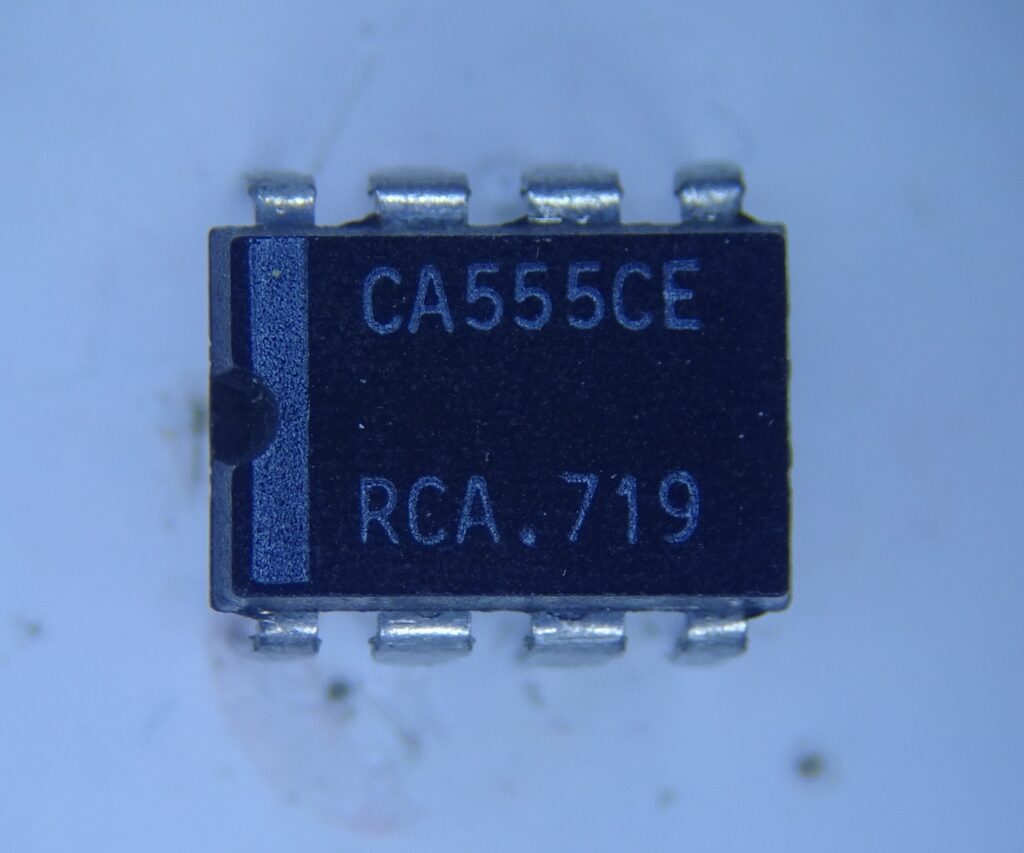Today we’ll look at a couple more versions of the 555 timer. Like the 741, this chip has been produced by many different manufacturers in the nearly five decades since its introduction by Signetics in 1972.

First up is RCA’s CA555. Packaged in an 8-pin DIP (which is what the “E” in “CA555CE” stands for), this is a “C” spec which can work at up to 16 V, unlike the CA555E that is spec’ed up to 18 V. I’m not sure what the actual difference between these two would be; I guess the chips were sorted after production, with parts that marginally failed some spec at 18 V being demoted to “C” versions.
Continue reading
